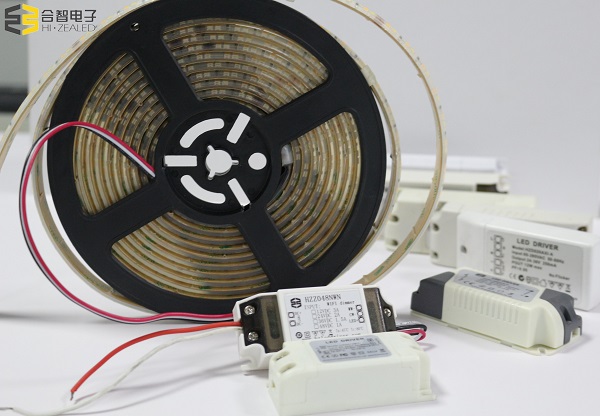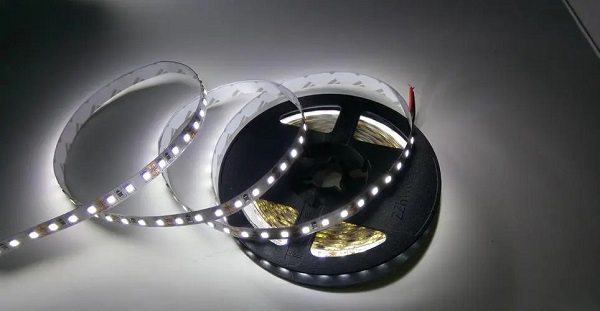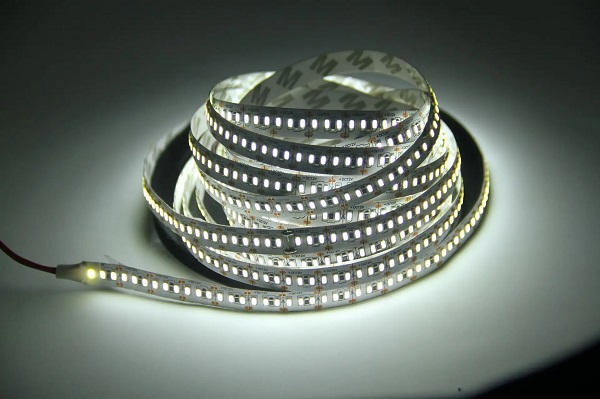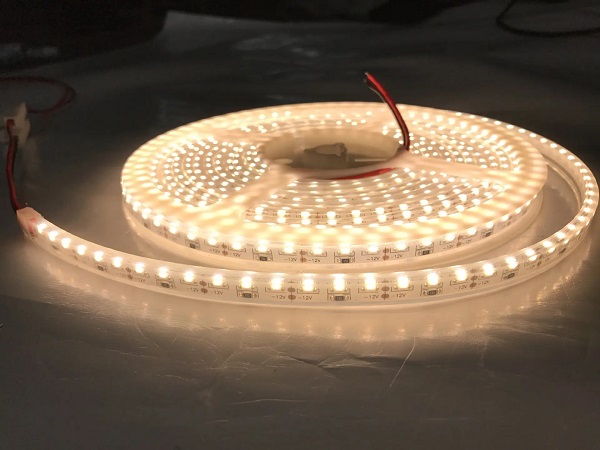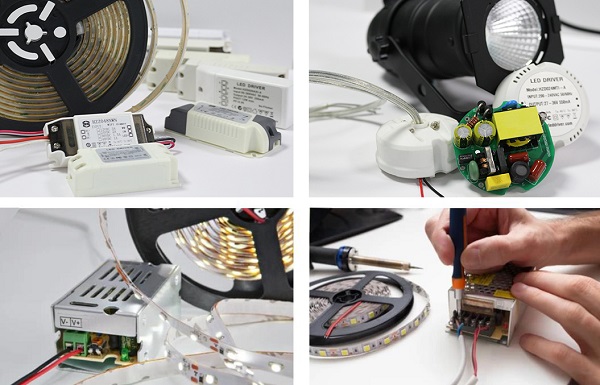The Ultimate Guide to 12V Power Supply for LED Strip Lights
Introduction
Welcome to the ultimate guide on 12V power supply for LED strip lights! In this comprehensive articale, we will delve into everything you need to know about powering your LED strip lights efficiently and effectively. Whether you're a DIY enthusiast or a professional electrician, understanding the intricacies of 12V power supply for LED strip lights is crucial for achieving optimal lighting results. Let's dive in!
What is a 12V Power Supply for LED Strip Lights?
A 12V power supply for LED strip lights, as the name suggests, is a device that converts the AC voltage from your electrical outlet into a steady and regulated 12V DC output. LED strip lights operate on low voltage DC power, making a 12V power supply an essential component to provide the necessary power for illuminating the LED strips.
Understanding the Importance of a Reliable Power Supply
The reliability of your power supply is crucial for maintaining the longevity and performance of your LED strip lights. A high-quality power supply ensures a stable and consistent power output, which is vital for the proper functioning of LED strip lights. Fluctuations in voltage or current can lead to flickering lights, reduced brightness, or even damage to the LEDs themselves. Therefore, investing in a reliable power supply is paramount to avoid any potential issues and maximize the lifespan of your LED strip lights.
Choosing the Right Power Supply for Your LED Strip Lights
When it comes to choosing the right power supply for your LED strip lights, several factors need to be taken into consideration. Let's explore these factors in detail:
Voltage Compatibility
The first and foremost consideration is voltage compatibility. LED strip lights commonly operate on 12V DC, although there are variations available, such as 24V or even 5V. Ensure that the power supply you choose matches the voltage requirements of your LED strip lights. Using an incorrect voltage can result in improper functioning or damage to the LEDs.
Power Capacity
Another crucial factor to consider is the power capacity of the power supply. LED strip lights come in various lengths and wattages, and it's important to choose a power supply that can handle the total power requirements of your LED strips. To calculate the power requirements, we'll discuss in detail in the upcoming section.
Quality and Safety Certifications
Opt for power supplies from reputable manufacturers that adhere to quality standards and safety certifications. Look for certifications such as UL or ETL to ensure that the power supply meets rigorous safety standards and is reliable for long-term use.
Dimming and Control Options
If you plan to incorporate dimming or control functionality in your LED strip lights, ensure that the power supply is compatible with such features. Some power supplies come with built-in dimming capabilities, while others require an external dimmer.
Size and Form Factor
Consider the physical dimensions and form factor of the power supply, especially if you have space constraints. Some power supplies are designed for recessed installations, while others are more compact and suitable for limited spaces.
Factors to Consider When Selecting a 12V Power Supply
Power Requirements
To determine the power requirements for your LED strip lights, you need to consider the length and wattage per meter of the LED strips. Multiply the length of the strip by its wattage per meter to calculate the total power consumption. For example, if you have a 5-meter strip with a wattage of 7W per meter, the total power consumption would be 35W.
Overload Protection
Ensure that the power supply has overload protection mechanisms in place. Overloading can occur if the connected load exceeds the power supply's capacity, leading to overheating and potential failure. Look for power supplies with features like short circuit protection, thermal shutdown, or current limiting to safeguard against overload situations.
Efficiency and Energy Consumption
Efficiency is an important aspect to consider, as it determines how much power is converted from AC to DC and how much is lost as heat. Look for power supplies with high efficiency ratings, such as those labeled as "Energy Star" compliant. Higher efficiency not only helps reduce energy consumption but also ensures that less heat is generated, leading to better reliability and longevity.
Temperature Ratings
Consider the operating temperature range of the power supply. LED strip lights can generate heat, and the power supply be able to handle the ambient temperature without any adverse effects. Look for power supplies with wide temperature ratings for optimal performance in various environmental conditions.
Noise and Electromagnetic Interference(EMI)
Some power supplies can introduce electromagnetic interference, causing unwanted noise or interference with other electronic devices. Look for power supplies that meet FCC regulations regarding electromagnetic interference to minimize any potential issues.
Warranty and Support
A reliable power supply should come with a warranty and proper customer support. Check the warranty period and ensure that you have access to technical support or assistance if needed.
Calculating Power Requirements for Your LED Strip Lights
To calculate the power requirements for your LED strip lights, you need to consider the length and wattage per meter of the LED strip lights. Follow these steps to determine the total power consumption:
1. Determine the length of your LED strip lights in meters.
2. Check the wattage per meter of the LED strips. This information is typically provided by the manufacturer or can be found in the product specifications.
3. Multiply the length of the strip by its wattage per meter to calculate the total power consumption. For example, if you have a 5-meter strip with a wattage of 7W per meter, the total power consumption would be 35W.
By accurately calculating the power requirements, you can select an appropriate power supply that can handle the load and prevent any issues related to under-powering or overloading.
Installing and Wiring the Power Supply
Proper installation and wiring of the power supply is essential for the safe and effective operation of LED strip lights. Follow these steps for a successful installation:
1. Choose a Suitable Location: Select a suitable location for the power supply, keeping in mind factors such as accessibility, ventilation, and proximity to the LED strips. Ensure that the power supply is protected from moisture and extreme temperatures.
2. Turn Off the Power: Before beginning the installation, turn off the power supply to avoid any electrical hazards. Locate the circuit breaker or fuse box and switch off the relevant circuit.
3. Prepare the Wiring: Measure and cut the appropriate length of wires for connecting the power supply to the LED strip lights. Use wire strippers to remove the insulation from the wire ends, exposing a sufficient length for connection.
4. Make the Connections: Connect the positive(+) and negative(-) wires from the power supply to the corresponding terminals of the LED strip lights. Ensure that the polarity is correct to prevent damage to the LEDs. Use wire nuts, soldering, or suitable connectors to secure the connections.
5. Secure the Wiring: Once the connections are made, use cable clips or adhesive-backed cable holders to secure the wiring along the desired path. This ensures a neat and organized installation while preventing any strain or damage to the wires.
6. Test the Installation: After completing the wiring, turn on the power supply and test the LED strip lights. Check for proper illumination, brightness, and any signs of flickering or voltage drop. If any issues are detected, double-check the wiring connections and consult the manufactures's guidelines.
Remember to follow all safety precautions and local electrical codes during the installation process. If you are unsure about any aspect of the installation, consult a qualified electrician to ensure a safe and reliable setup.
Conclusion
Selecting the right 12V power supply for your LED strip lights is crucial to ensure optimal performance, safety, and longevity. Consider factors such as power requirements, quality and safety certifications, dimming options, size, and form factor when making your selection. Calculate the power requirements accurately to choose a power supply that can handle the load without voltage drop issues. Additionally, pay attention to efficiency ratings, energy consumption, and proper installation techniques to maximize the performance of your LED strip lights.
By understanding the importance of a reliable and suitable power supply, you can create stunning lighting effects and enhance the ambiance of any space with LED strip lights.
